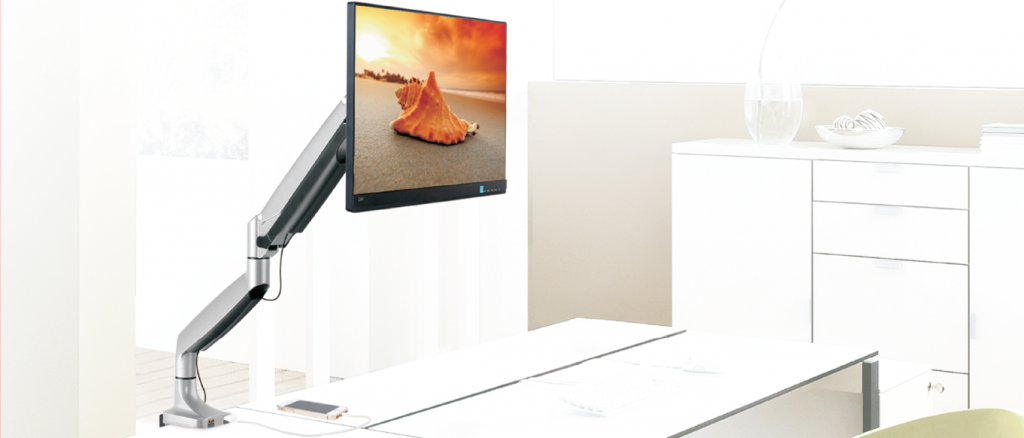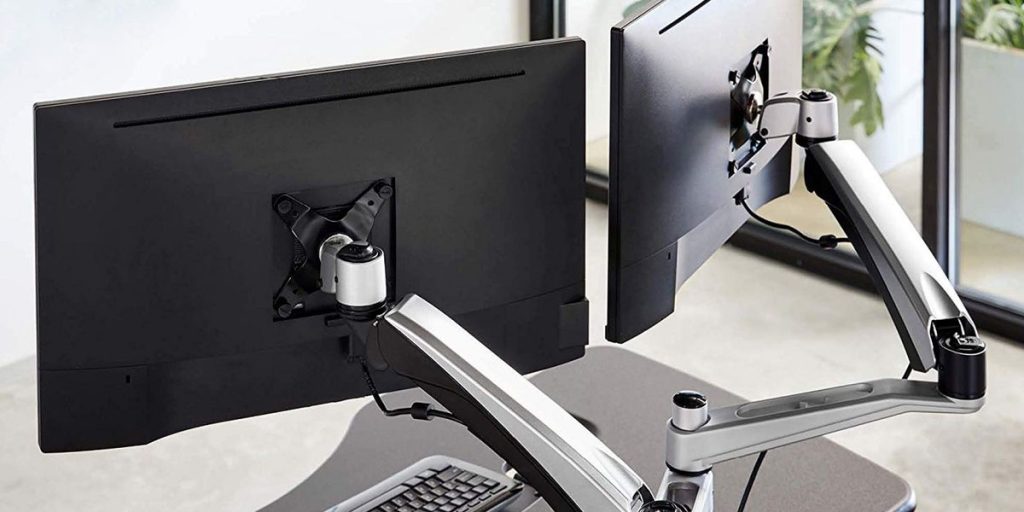Is it worth tracking arms? What are the advantages of one control arm? Since many of us stare at computer screens most of the day, it is important to optimize our comfort and make our viewing experience as enjoyable as possible. Monitor weapons will help with both; however, they save desk space and streamline your work area, giving your monitor the “floating” look. Not sure yet? Read our Purchase Guide for the Display Neck.
Benefits of Monitor Arms
The monitoring arms will help to reduce the pressure of the neck, back and eye and the pain associated with such discomfort. In an everyday work environment, being able to adjust the height, width, and angle of a display to the best position for your height and seating or standing style makes a world of difference. Improved relaxation leads to higher productivity, improved health and decreased stress.

Types of Monitor Mounts
Monitor arms are “mounted” to a desk or a wall and there are several types of monitor mounts including:
- Spring Mounts
- Post Mounts
- Wall Mounts
- Rail Mounts
- Laptop Mounts
Spring Mounts
Spring mounts are the costlier display arm solution, but additional flexibility and adjustability come with the added expense. Spring mounts can move in any direction and allow the positioning to be very precise. They are meant to move around and are suitable in office or work environments where the show is used by multiple people. Those mounts support almost all positions of swivel, tilt, and rotation. positions of swivel, tilt, and rotation.
Our favorite spring mount is the Humanscale M8.1 monitor arm.
Spring mounts come in two types: gas and mechanical. The more expensive gas spring mounts run quietly and have a smooth, very fluid motion. Mechanical spring mounts work lighter and are not as smooth as gas spring mounts, but they last longer with fewer parts and no seals.
Post Mounts
Post mounts are cheaper but still give a strong, secure link to your desk. The arms can be modified on post mounts but are more rigid in that they cannot be rotated as extensively as spring mounts. Nonetheless, post mounts are a perfect monitor mounting solution for a personal space where you are not shifting your display after changing it the first time.
Our favorite Post Mount is the SpaceCo SpaceArm Stubby Single Arm.

Wall Mounts
Wall mounts are meant to be built just like a wall-mounted TV on a wall. Wall mounts fit well for medical professionals including dentists and physicians whose equipment needs to be moved out of the way quickly. Wall mount solutions also include mouse and keyboard trays, so a whole “machine” can be taken out to show a patient something and then pushed away while the work is being done. Wall mounts are great at home, too, if you don’t want the extra adjustability provided by a spring or post mount and want a clean look without anything attached to your desk instead.
Rail Mounts
Rail mounts are less common in consumer environments, as they are usually used in the financial, medical, and security industries where many (6 +) monitors are mounted. Rail supports, while offering a variety of flexibility and customizable options, accommodate more weight than a typical display neck.
Laptop Mounts
Laptop mounts are very similar to a typical monitor arm in that they are mounted to a desk but are designed to support a laptop instead of supporting your show. There are also options for laptop mounting which support a second or third display so you can mount both your laptop and external monitor.


